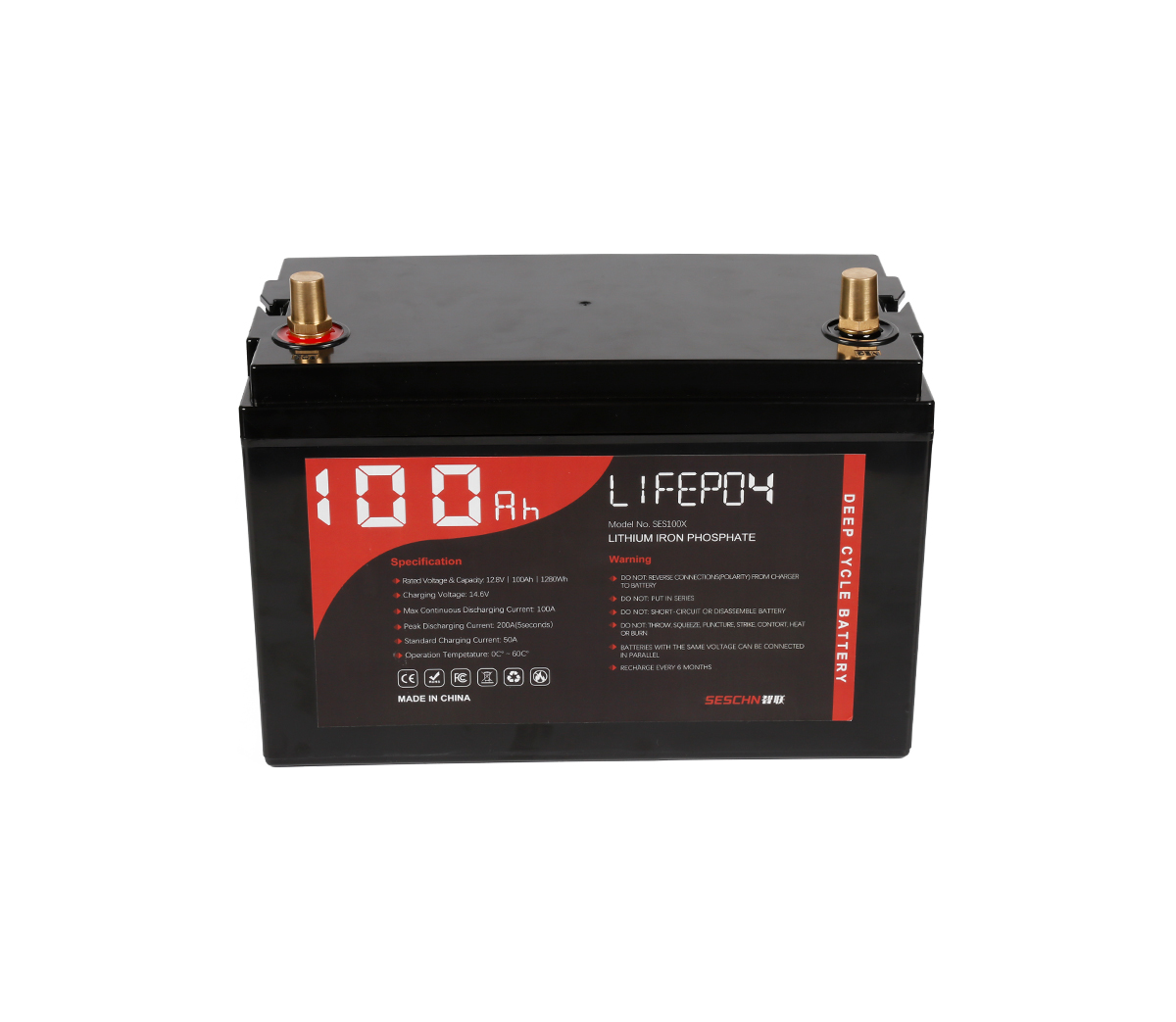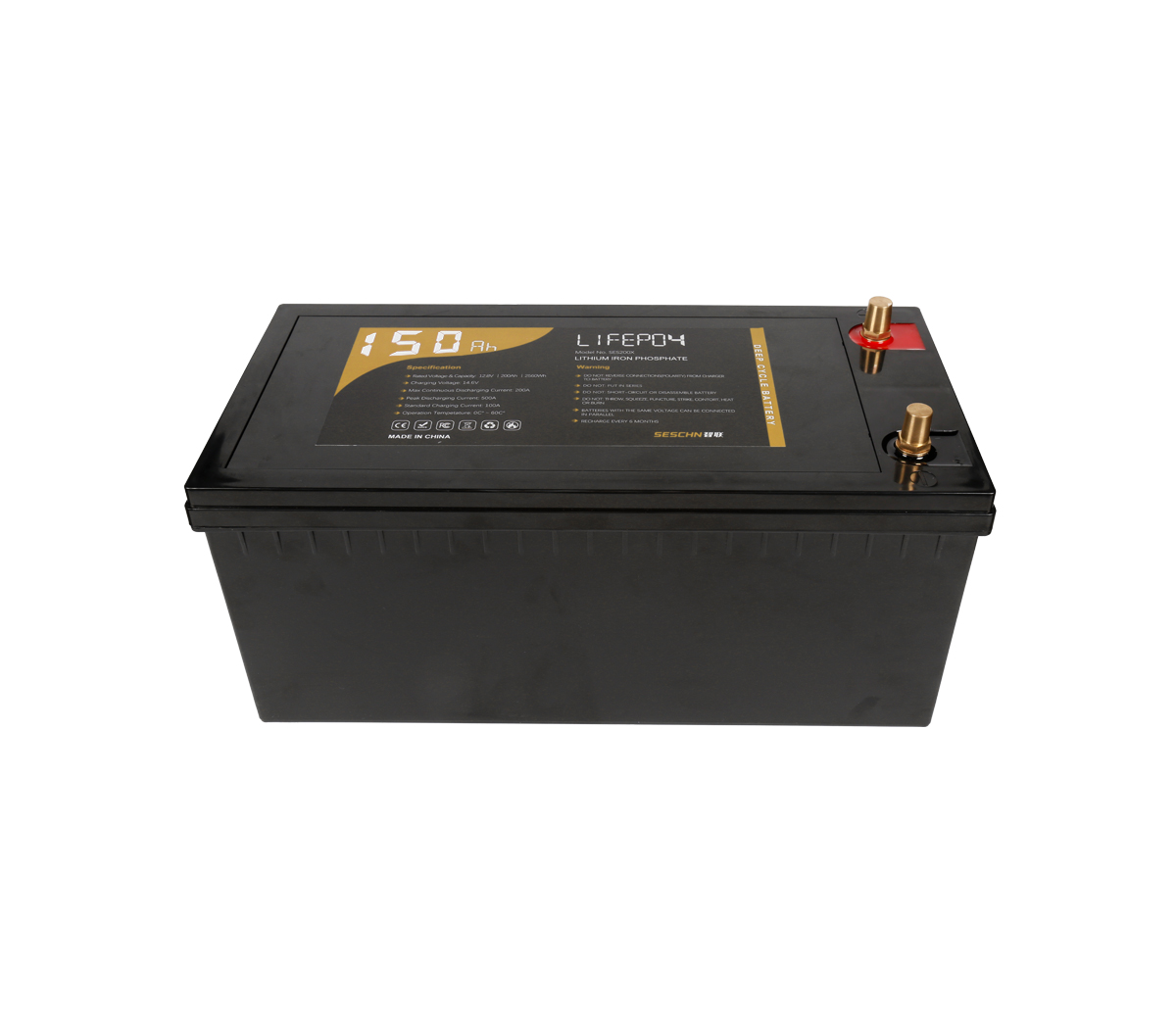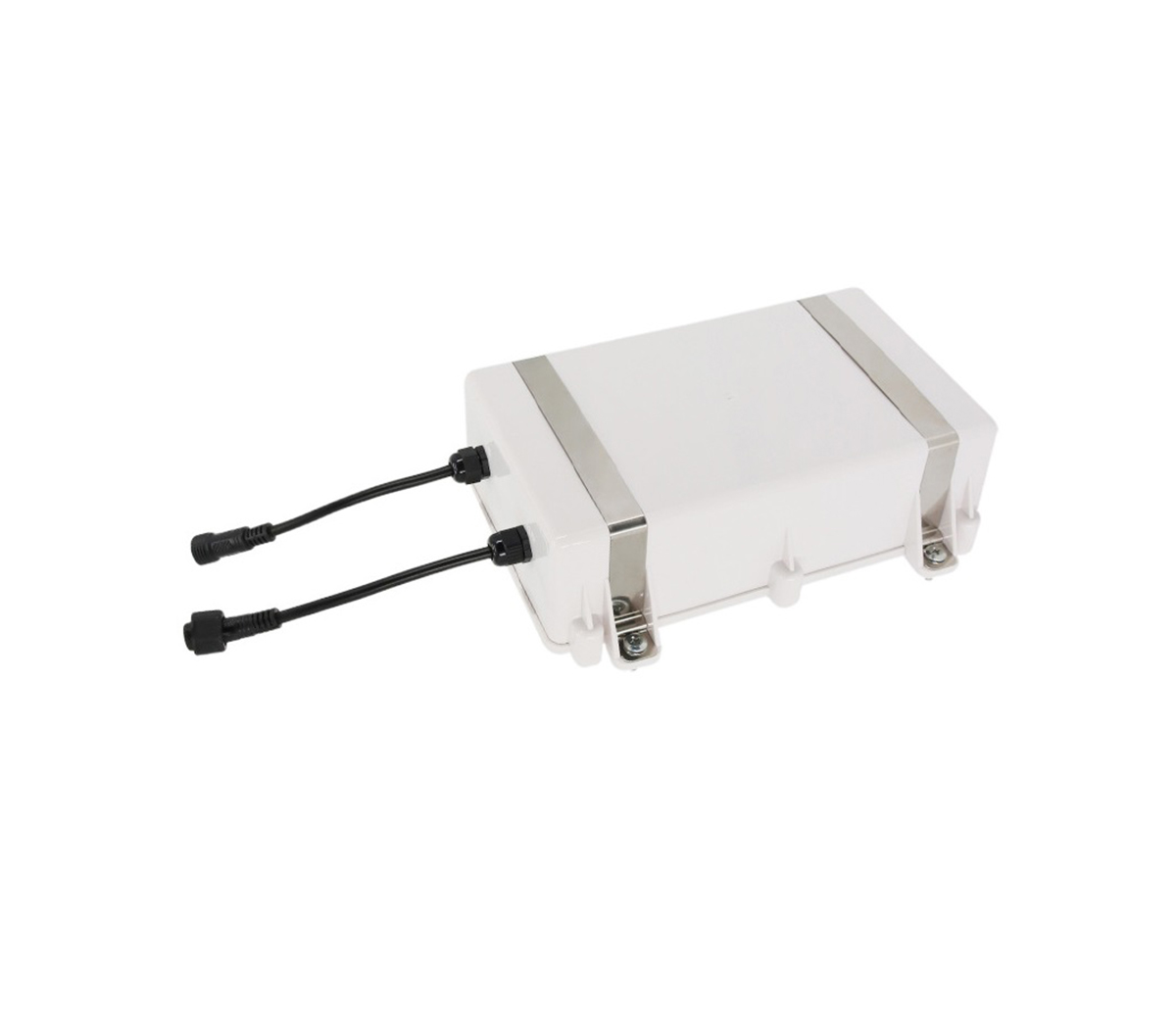
The current research on lithium-ion batteries focuses on improving energy
density, rate and power performance, cycle performance, safety performance, and
reducing manufacturing costs. However, it is inevitable to involve in almost all
research fields related to lithium-ion batteries Analysis and discussion of
solid electrolyte interface membrane (SEI).
Subsequently, researchers began to try to replace lithium metal anodes with
graphite anodes. Although it effectively solved the safety hazards caused by
lithium dendrites, the solvated PC molecules in the electrolyte can be
co-intercalated with lithium ions into the interlayer structure of graphite. ,
Unable to form a stable SEI film on the graphite surface. Until 1990, DAHN et
al. found that the ethylene carbonate (EC) solvent molecules in the electrolyte
can form a relatively stable SEI film on the surface of the graphite negative
electrode, effectively inhibiting the co-intercalation of solvent molecules, and
solving the safety problem of lithium metal negative electrodes. At the same
time, the cycle stability is improved, and finally the lithium-ion battery
represented by the graphite negative electrode has been successfully
commercialized and is still in use today.
It can be seen that the process of people’s research and understanding of
SEI films for lithium-ion batteries has played a vital role in the development
of the entire lithium-ion battery. Stabilizing the production of SEI films is
the ability of lithium-ion batteries to be able to charge and discharge normally
and to ensure various Prerequisites for electrochemical performance.
This paper summarizes the formation process mechanism, influencing factors,
research ideas and current status of SEI film, and prospects for future
potential research directions are as follows: study the formation mechanism and
function of SEI film on the surface of new cathode materials; explore the
optimization of functional electrolyte formulations, Study the film formation
mechanism and effects of new solvents, lithium salts or additives; use in-situ
analysis or theoretical calculation methods to in-depth study the chemical
composition and morphological structure of SEI films; explore effective
artificial SEI film construction methods and realize SEI film structure
Controllable optimization.
1. The formation process and reaction mechanism of SEI film
At present, the electrolyte of commercial lithium-ion batteries is mainly
composed of cyclic or linear carbonate solvents, lithium salts and a small
amount of functional additives. The highest occupied molecular orbital energy
level (HOMO) is about 1.0V and 4.7Vvs.Li+/Li respectively. When the lithium-ion
battery is first formed and charged, the surface potential of the negative
electrode material decreases continuously. When it is lower than 1.0V, the
electrolyte composition can be reduced. Reductive decomposition, in which
insoluble reductive decomposition products will gradually deposit on the surface
of the negative electrode material to form an SEI film.
2. The chemical composition and morphology of SEI film
Since the SEI film has an important impact on the performance of lithium
ion batteries, the ideal SEI film should have the following characteristics:
①The film formation potential of the SEI film must be higher than the insertion
or extraction potential of lithium ions, so as to effectively prevent solvent
molecules Co-intercalation; ②SEI film components are insoluble in the
electrolyte and can remain stable within the working voltage and temperature
range of lithium-ion batteries; it has a moderate thickness and a "rigid and
flexible" molecular structure, which can adapt to the volume change of the
negative electrode material. , And can maintain the stability of the cycle
structure; ③It has a high degree of electronic insulation and selective passage
of lithium ions. The electronic insulation is to prevent the decomposition of
more electrolyte and the formation of a thicker SEI film, and the ion
conductivity is to protect the lithium Smooth ion migration and embedding
channels.
With more and more characterization studies on the chemical composition of
SEI membranes, various researchers have formed some consensus on the basic
chemical composition and structure of SEI membranes. Just as Wang et al.
proposed in the latest review article that SEI membranes are close to the
electrode interface The inner layer is mainly inorganic substances such as
Li2CO3, Li2O, LiF, and the outer layer near the electrolyte interface is mainly
organic products such as ROLi, ROCO2Li, and the inner structure is dense and
compact, and the outer structure is loose and porous.
3. The influence of graphite material surface characteristics on the
formation process of SEI film
Carbon materials have stable physical and chemical properties, and their
lithium insertion voltage is slightly higher than that of metal lithium anodes.
There is no risk of lithium dendrites precipitation, and they have abundant
reserves and low cost. They are very suitable as anode materials for lithium-ion
batteries. Graphite is currently the most commercially used carbon anode
material. It is a two-dimensional layered structure composed of a single layer
of graphene. The research of YAZAMI et al. [14-15] showed that during the first
charging process, the graphite surface of the electrolyte is first reduced to
form SEI film, and then lithium ions are intercalated between graphite layers to
form graphite lithium intercalation compounds. Therefore, graphite material
characteristics such as particle size and specific surface area, end and basal
surface, crystallinity and surface functional groups will have an important
impact on the structure and composition of SEI film. .
4. The influence of electrolyte composition on the formation process of SEI
film
SEI film is mainly formed by the reduction and decomposition of various
components in the electrolyte, so the composition of the electrolyte has an
important influence on the morphology and composition characteristics of the SEI
film. BOYER et al. studied the influence of the relative ratio of ethylene
carbonate (EC) and dimethyl carbonate (DMC) solvents on the composition of the
SEI film through theoretical calculations. The results showed that EC can form
EC-radicals on the graphite surface through single-electron reduction, and
further occur. The multi-electron reduction reaction forms carbonate or
bicarbonate, and when the EC content in the electrolyte is relatively high,
because the graphite surface is covered by more unsolvated EC molecules, the EC
is reduced to form carbonate. Limited, it is easier to form a thinner and dense
SEI film.
5. The influence of chemical conversion process on the formation process of
SEI film
The formation process of forming the SEI film is generally to vacuum the
assembled lithium ion battery, and then use inert gas to inject the electrolyte
under a certain pressure, and leave it for a proper time to allow the
electrolyte to fully infiltrate the pores of the electrode or diaphragm, and
then add 0.02 ~0.2C lower current density to charge the battery. The formation
process parameters include formation voltage, current density, temperature, etc.
The formation voltage mainly affects the film-forming reaction path, while the
formation temperature and current density mainly affect the rate of the
film-forming reaction. AN et al. [25] showed that under different charging
voltages, the decomposition reaction of the electrolyte is different. When the
negative electrode is above 1.0Vvs.Li+/Li, only the lithium salt will decompose
to produce a small amount of LiF, while the solvent or additive molecules are
The reductive decomposition starts below 0.8V. RODRIGUES et al. [26] found that
using ionic liquid electrolyte and increasing the formation temperature to 90°C
will make the SEI film formed on the graphite surface thicker and have better
thermal stability, but the rate performance will decrease.
6, electrolyte and SEI membrane research ideas
There are already tens of thousands of reported electrolyte solvents,
lithium salts or additives, but only dozens of them are actually used in
commercial battery products. The reason is that the electrolyte formulations
reported in the literature generally only focus on improving the single
performance of lithium-ion batteries, and cannot meet the comprehensive
performance indicators when used as battery products. The most typical example
is the poor thermal stability of lithium hexafluorophosphate when used as a
lithium salt, and its shortcomings such as sensitivity to moisture are very
obvious. However, no other commercial lithium salt that can replace it has been
found so far. Therefore, the original intention of electrolyte formulation
optimization is not to maximize performance in a certain aspect, but to find the
balance point for the best overall performance. Taking the study of VC additives
as an example, in order to improve the room temperature cycle performance of
battery cell products, when the addition amount of VC is increased from 0.5% to
2% to more than 3% to 5%, a thicker SEI film of 100nm or more will be formed,
which makes phosphoric acid The normal temperature cycle life of
iron-lithium/graphite battery products has been increased from 2000 weeks to
3000 weeks, but the price is high internal resistance of the battery. Due to the
poor kinetics of the lithium insertion reaction during low-temperature cycles at
-20°C, the low-temperature cycle life is less than 50 weeks. Only use no more
than 3% of VC additives, and then use other additives that can reduce the
impedance and increase the ion mobility of the SEI membrane.
7. Conclusion
Because the formation process of SEI film is complicated and affected by
many factors, it is very difficult to carry out systematic research on SEI film.
However, SEI film is also an indispensable component of lithium ion battery,
combined with lithium ion battery manufacturer’s advanced electrolyte
formulation and advanced technology. With the needs of SEI technology, future
research directions in this field may focus on the following aspects.
(1) In order to obtain higher energy density, high nickel ternary
materials, lithium-rich lithium manganate materials and other new cathode
materials with high specific capacity and high voltage characteristics have been
continuously developed. For these new cathode materials, the surface SEI film
The formation mechanism and its influence on electrochemical performance are
becoming more and more urgent. At present, a small number of studies have shown
that the positive electrode surface can also form an SEI film structure or
composition similar to the negative electrode surface during the chemical
conversion charging process. The interaction and influence between the two are
in an unknown state.
(2) With the development of the electrochemical system of lithium-ion
batteries, performance requirements such as working voltage, working
temperature, cycle life, and safety are getting higher and higher. Traditional
carbonate-based electrolyte formulations can no longer meet application
requirements. The optimization of liquid formulations and the search for new new
solvents, lithium salts or additives with excellent performance have become a
top priority. In this process, exploring the mechanism and function of SEI film
formation of various new electrolyte components will point out the direction of
the development of electrolyte formulations.
(3) The SEI film belongs to the nanometer scale, and along with the
charging and discharging process of the lithium ion battery, its morphology and
structure are always changing, and the chemical composition of its surface is
very sensitive to environmental conditions, so traditional ex-situ
characterization is used. It is difficult to systematically research and analyze
SEI membranes with technology. It is urgent to construct some effective in-situ
analysis methods to realize real-time, dynamic and accurate detection of changes
in SEI membranes under the working conditions of lithium-ion batteries. In
addition, experimental methods should be combined with theoretical calculation
methods. For example, the theoretical calculation results of the surface state
of the material and the reaction activity will provide important theoretical
guidance for the study of SEI films.
(4) At present, the commercial production of lithium-ion batteries can only
form SEI film on the electrode surface through chemical conversion charging. The
process is low in controllability, and the directional control of the morphology
and structure of the SEI film cannot be achieved. Process parameters undergo
constant trial and error. Therefore, if a method of controllable growth of
artificial SEI film on the electrode surface can be constructed, and an SEI film
structure that meets the battery performance requirements can be easily
prepared, it will undoubtedly be of great significance to the development of
lithium-ion battery technology.



































